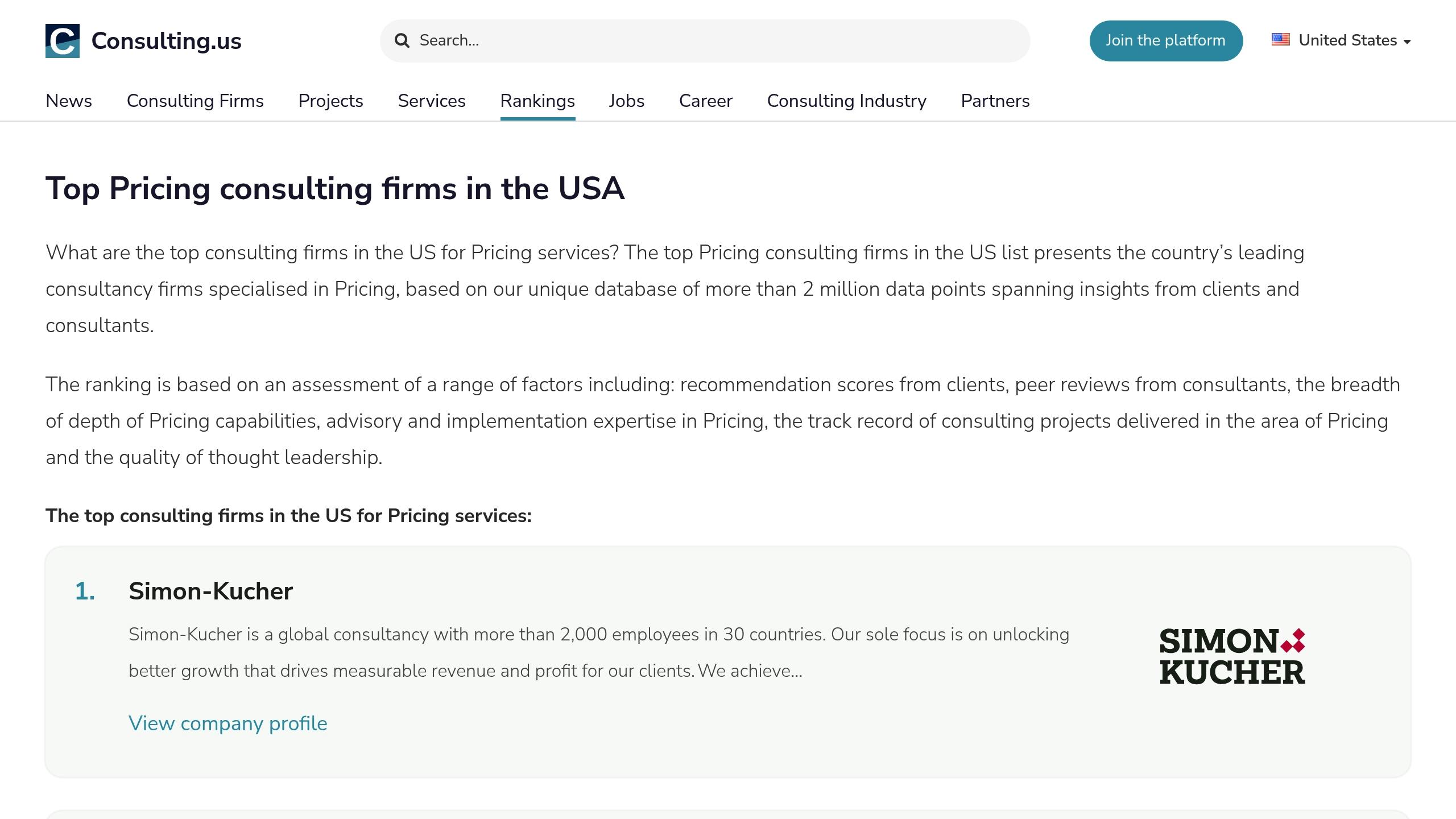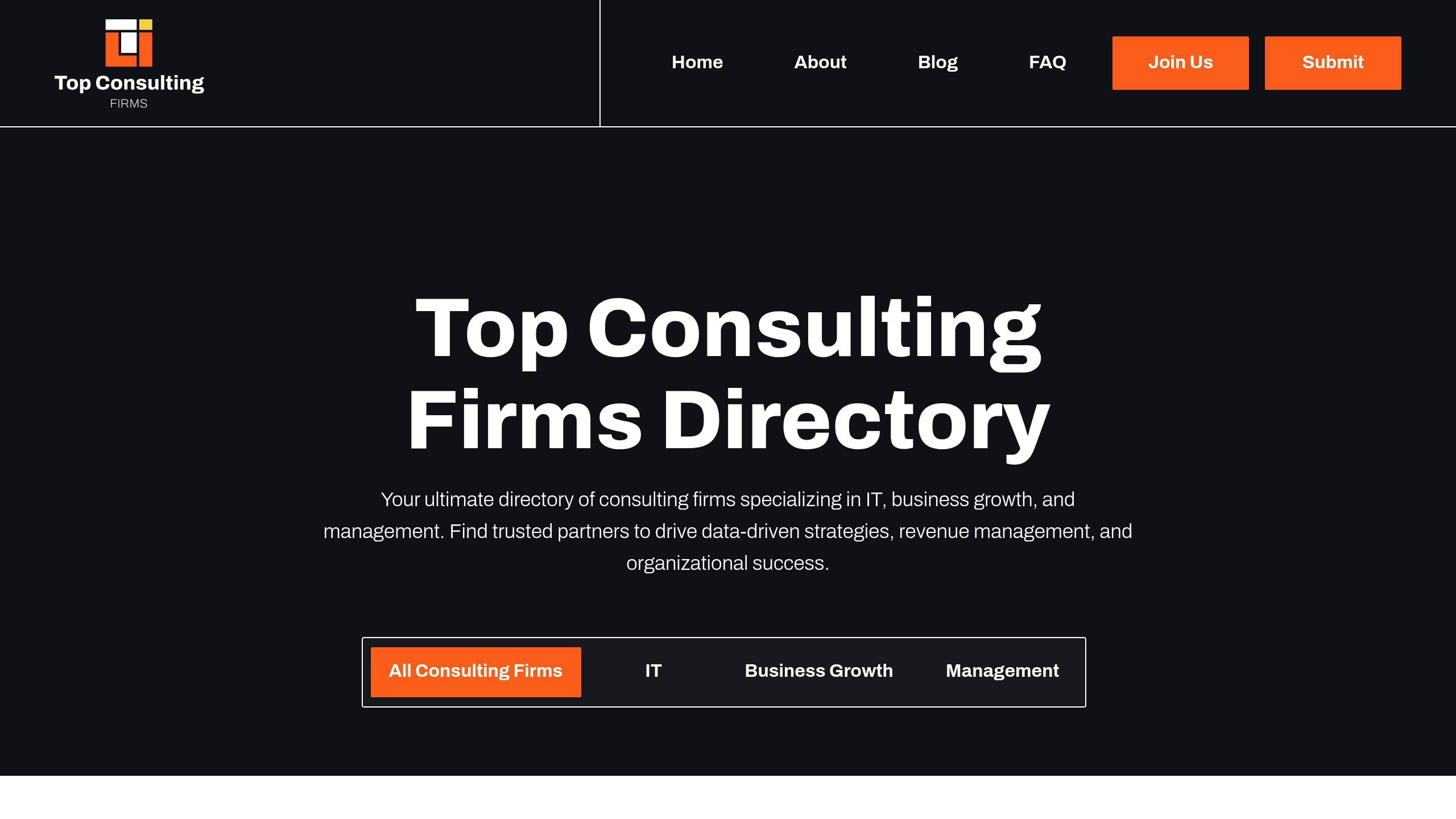Cost-plus pricing is a simple way to set prices by adding a fixed percentage (markup) to your total costs. It’s widely used in industries like manufacturing, government contracting, and services because it ensures all costs are covered while guaranteeing a profit margin. Here's a quick summary:
-
Formula:
Selling Price = Total Cost + (Total Cost × Markup Percentage)
Example: If your total cost is $500 and the markup is 40%, the selling price is $700. -
Key Components:
- Direct Materials: Raw materials used in production.
- Direct Labor: Wages for workers directly involved.
- Overhead Costs: Indirect costs like rent, utilities, or admin expenses.
- Advantages: Easy to calculate, ensures cost coverage, and defines a clear profit margin.
- Challenges: Ignores market demand, competition, and may lead to inefficiencies.
To succeed with cost-plus pricing, regularly review your costs, adjust markup based on market trends, and consider blending it with other pricing methods like value-based or competition-based pricing for flexibility.
Cost Plus Pricing | What is Cost Plus Pricing?
Cost-Plus Pricing Formula
Cost-plus pricing sets selling prices by adding a markup to the total costs. Breaking down its components helps businesses make better pricing decisions.
Key Elements of the Formula
This pricing formula includes three main elements:
Total Cost Breakdown:
- Direct Materials: Raw materials and components used in production.
- Direct Labor: Wages and benefits for workers directly involved in making the product.
- Overhead Costs: Indirect expenses like utilities, rent, and administrative costs.
The formula looks like this:
Selling Price = Total Cost + (Total Cost × Markup Percentage)
For instance, if your total cost is $100 and the markup percentage is 25%:
Selling Price = $100 + ($100 × 0.25) = $125
Now, let’s walk through a practical example to see how this works.
Example Calculation
Imagine a furniture manufacturer calculating the price for a product:
- Direct Materials: Includes wood, hardware, fabric, padding, and finishing materials: $250.
- Direct Labor: Covers assembly and upholstery work: $160.
- Overhead Costs: Accounts for factory utilities, rent allocation, equipment depreciation, and administrative expenses: $90.
Total Cost: $500
With a 40% markup for profit:
Selling Price = $500 + ($500 × 0.40) = $700
This approach ensures all costs are covered while generating a profit.
| Cost Component | Amount |
|---|---|
| Direct Materials | $250 |
| Direct Labor | $160 |
| Overhead Costs | $90 |
| Total Cost | $500 |
| Markup (40%) | $200 |
| Final Selling Price | $700 |
Keep in mind, adjustments may be necessary for factors like fluctuating costs or volume discounts. Regularly reviewing markup percentages based on market trends, competitor pricing, and customer demand is crucial to maintain profitability and remain competitive.
Pros and Cons
Cost-plus pricing comes with both advantages and challenges. Understanding these helps businesses craft better strategies. Let’s dive into the broader strategic impacts based on the earlier cost and markup breakdown.
Benefits and Challenges
Here’s a comparison of the pros, cons, and ways to address the challenges:
| Advantages | Challenges | How to Address |
|---|---|---|
| Easy to Use – Straightforward to calculate and apply | Ignores Market Factors – Overlooks demand and competition | Conduct regular market research to fine-tune markup percentages |
| Covers Costs – Guarantees all costs are accounted for | Potential Inefficiency – May encourage inefficiencies or complacency | Implement performance metrics to keep costs in check |
| Defined Profit Margin – Ensures transparent profit margins | Pricing Mistakes – Increases the risk of pricing errors by up to 20% | Frequently update and review cost estimates |
Market realities often demand flexibility. Pricing expert John Smith highlights this challenge:
"Cost-plus pricing can create a false sense of security regarding profitability, as it often ignores the competitive landscape."
To address this, many businesses combine cost-plus pricing with other methods. For instance, manufacturers might start with cost-plus pricing as a foundation but adjust final prices based on market demand, competition, and customer preferences.
Blending cost-plus pricing with value-based approaches helps maintain profit margins while staying competitive. The secret to success? Regularly analyze costs, monitor demand, track competitors, and evaluate performance. By doing this, businesses can adapt to market shifts while ensuring profitability remains intact.
sbb-itb-97f6a47
Implementation Steps
Here's a clear guide to applying cost-plus pricing effectively.
Cost Calculation
Start by identifying all your costs - both fixed and variable. Use the table below to categorize and calculate them:
| Cost Category | Examples | Calculation Method |
|---|---|---|
| Direct Materials | Raw materials, components | Per-unit cost × quantity |
| Direct Labor | Wages, benefits | Hours × labor rate |
| Overhead | Utilities, rent, insurance | Total overhead ÷ production units |
| Variable Costs | Shipping, packaging | Cost per unit sold |
Don’t forget to include:
- Equipment depreciation
- Quality control expenses
- Storage and handling
- Administrative overhead allocation
Once you’ve totaled all costs, determine a markup to ensure profitability.
Markup Selection
Choose a markup percentage that makes sense for your business by considering:
- Industry norms: For example, retail clothing often uses a 50-100% markup, while grocery stores stick to 15-25%. Tech products might need 60-70% due to shorter lifecycles.
- Business objectives: Align your markup with your financial and strategic goals.
- Product risks: Account for factors like obsolescence, seasonality, or high returns.
Market Adjustments
After setting a base price with your markup, adjust it to reflect market realities:
1. Competitive Analysis
Keep an eye on what your competitors are charging. Adjust your pricing by:
- Identifying inefficiencies in your cost structure
- Tweaking your markup percentage
- Finding ways to cut costs, like bulk purchasing
2. Demand Elasticity
Understand how pricing affects demand. Monitor:
- Changes in sales volume
- Customer feedback trends
- Shifts in market share
3. Strategic Positioning
Make sure your prices align with your brand. Premium brands can justify higher markups, while value-focused companies might aim for lower margins to attract more customers.
Other Pricing Methods
While cost-plus pricing is straightforward, businesses often explore other pricing strategies to stay competitive and improve profitability in different market environments.
Common Pricing Strategies
Here are several pricing methods that can work alongside or as alternatives to cost-plus pricing:
| Pricing Method | Description | Best Used When | Example Applications |
|---|---|---|---|
| Value-Based Pricing | Prices are determined by how much customers value the product or service. | Products offer unique benefits or experiences. | Consumer electronics, innovative software |
| Dynamic Pricing | Prices change in real time based on market demand. | Demand fluctuates frequently. | Transportation, hospitality, ride-sharing |
| Penetration Pricing | Starts with low prices to quickly gain market share. | Entering a new market or launching a product. | Subscription services, tech launches |
| Premium Pricing | Sets high prices to reflect quality or luxury. | Targeting niche or luxury audiences. | High-end goods, luxury vehicles |
| Competition-Based Pricing | Prices are set based on competitors' rates. | Market is highly competitive, and comparisons are common. | Retail, service industries |
These strategies allow businesses to adapt to different market needs, offering flexibility in how they approach pricing. By understanding the strengths and use cases of each method, companies can refine their approach to better align with customer expectations and market conditions.
Top Consulting Firms Directory Services

If you're working with cost-plus pricing, having the right expert support can make all the difference. The Top Consulting Firms Directory is a resource designed to connect businesses with specialists who can fine-tune their pricing strategies.
Top Consulting Firms Directory

This directory simplifies the process of finding skilled pricing consultants by focusing on essential criteria:
| Selection Criteria | What to Look For | Why It’s Important |
|---|---|---|
| Pricing Expertise | Consultants experienced in cost-plus pricing | Ensures they understand cost structures and can optimize markups effectively |
| Industry Knowledge | Familiarity with your business sector | Offers relevant advice on industry-specific costs |
| Data Analysis Skills | Proficiency with data-driven methods | Helps ensure accurate cost calculations and competitive markups |
| Client Success | Case studies and testimonials | Proves their ability to deliver successful pricing strategies |
| Service Customization | Personalized pricing solutions | Meets your unique business needs and market conditions |
To get the most out of this directory:
- Use search filters to find consultants with cost-plus pricing expertise
- Check profiles for success stories in pricing implementation
- Read client reviews that highlight measurable results
- Look for consultants with strong analytical and data skills
The directory carefully vets its consultants to ensure they bring both technical accuracy and industry-specific insights to the table.
Additional benefits include:
- Updates on the latest pricing trends
- Case studies showcasing cost-plus pricing in action
- Direct connections to experts in your industry
- Comparison tools to evaluate consultant qualifications
This tailored resource is designed to help you refine your cost-plus pricing strategy with confidence.
Cost-Plus Pricing: A Key Approach for Predictable Costs
Cost-plus pricing continues to be a go-to strategy for businesses that need consistent and predictable cost management. In fact, a recent survey found that 60% of manufacturers rely on this method as their main pricing strategy, proving its staying power in today's competitive markets.
Key Factors for Success
The effectiveness of cost-plus pricing hinges on a few important considerations. Here's a breakdown of what businesses should focus on:
| Factor | What to Watch For | Why It Matters |
|---|---|---|
| Cost Accuracy | Regularly review and document all expenses | Ensures prices reflect true costs |
| Market Awareness | Balance cost coverage with competitive pricing | Avoids overpricing or underpricing |
| Strategic Use | Combine with other pricing methods when needed | Improves adaptability to market changes |
| Ongoing Review | Continuously assess cost structures | Keeps pricing relevant and effective |
These factors highlight the need for a balanced approach to pricing that goes beyond just covering costs.
"Cost-plus pricing is a reliable method for ensuring that all costs are covered, but it may not always align with market demand." - Jane Doe, Pricing Strategy Expert, Pricing Solutions Inc.
While cost-plus pricing ensures expenses are covered, it’s equally important to stay responsive to the market. Many businesses are now blending cost-plus with value-based pricing to strike a balance between financial stability and market competitiveness. This hybrid approach reflects how companies are adapting to modern demands while safeguarding their bottom line.


